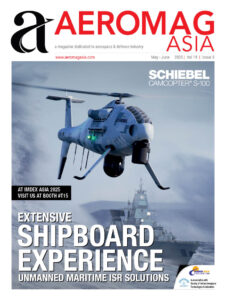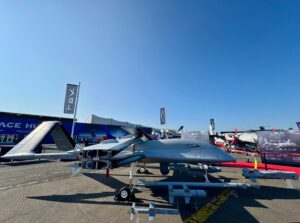
Sikorsky, a Lockheed Martin company, has been awarded a $6 million contract by the Defence Advanced Research Projects Agency (DARPA) to implement its ALIAS/MATRIX flight autonomy system on the U.S. Army’s experimental fly-by-wire UH-60M Black Hawk helicopter. Designated as MX, the upgraded aircraft will allow the U.S. Army Combat Capabilities Development Command (DEVCOM) to test a variety of autonomy capabilities, ranging from single-pilot operation to fully uninhabited flight.
“Autonomy-enabled aircraft will reduce pilot workload, dramatically improve flight safety, and give battle commanders the flexibility to perform complex missions in contested and congested battlespace, day or night in all weather conditions,” said Rich Benton, Sikorsky vice president and general manager. “Soldiers will rely on Black Hawk helicopters into the 2070s, and modernizing the aircraft today will pay dividends for decades across Army Aviation’s current and future aircraft.”
The MATRIX autonomy system is integral to DARPA’s ALIAS (Aircrew Labor In-cockpit Automation System) program. In 2020, Sikorsky contributed hardware and engineering support to install fly-by-wire flight controls on the MX aircraft. When combined with the MATRIX autonomy system, the MX will closely resemble Sikorsky’s UH-60A fly-by-wire Optionally Piloted Black Hawk helicopter, which has successfully tested MATRIX technology over hundreds of flight hours.
Sikorsky plans to integrate the MATRIX system into the MX helicopter in 2025. This upgraded aircraft will facilitate DEVCOM’s exploration of scalable autonomy systems, focusing on the practical applications and operational concepts. The evaluation will assess various sensor suites for threat perception and avoidance, as well as standards and system specifications interfaced with the MATRIX and the fly-by-wire flight control system.
In July 2024, Sikorsky and DARPA showcased the Optionally Piloted Black Hawk helicopter to U.S. military personnel and senior Department of Defence officials, demonstrating how the aircraft can be operated by an onboard pilot or remotely controlled via a tablet that inputs high-level mission goals.
These demonstrations followed successful autonomous flights at Project Convergence 2022, where Sikorsky and DARPA showed that the Optionally Piloted Black Hawk, operating without crew onboard, could safely conduct internal and external cargo resupply missions.
The integration of autonomous capabilities like MATRIX technology is a cornerstone of Lockheed Martin’s 21st Century Security vision, aimed at modernizing the Black Hawk helicopter to address emerging threats and enhance operational effectiveness.











